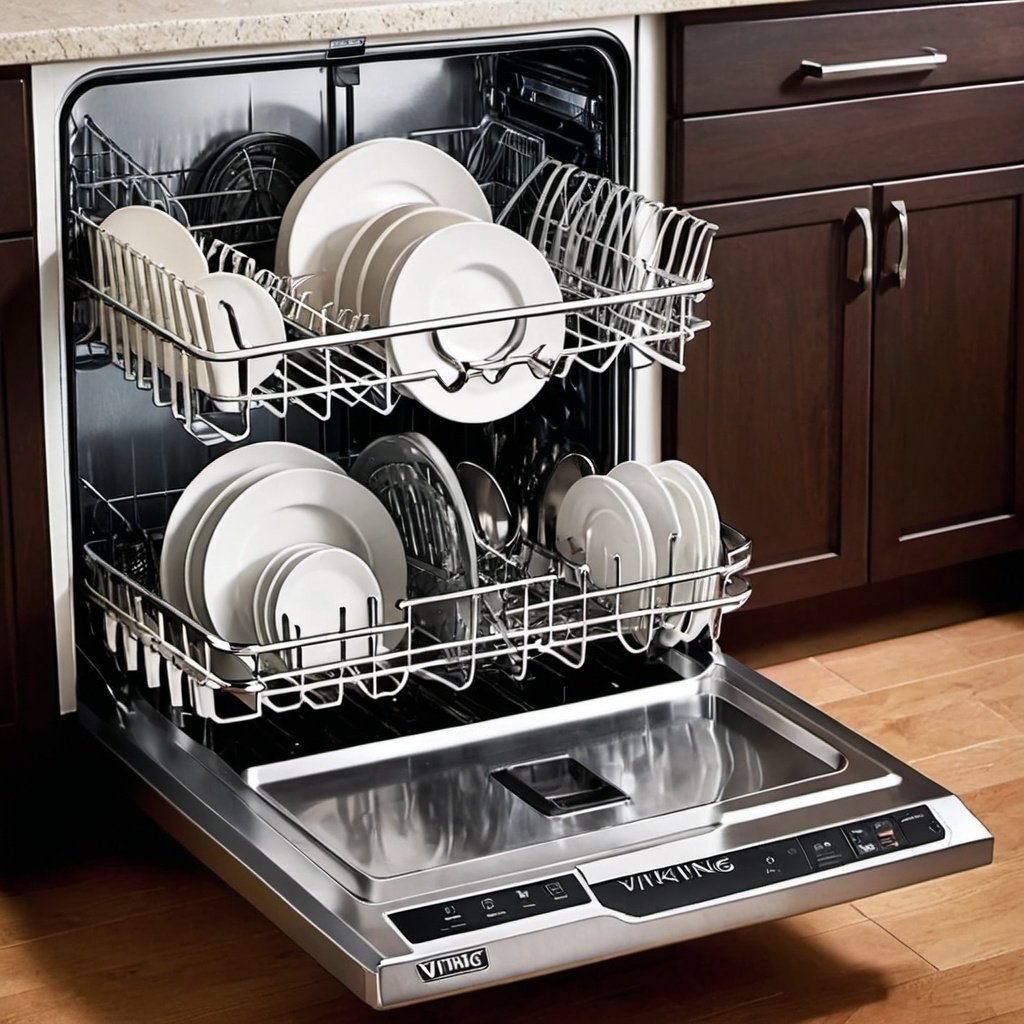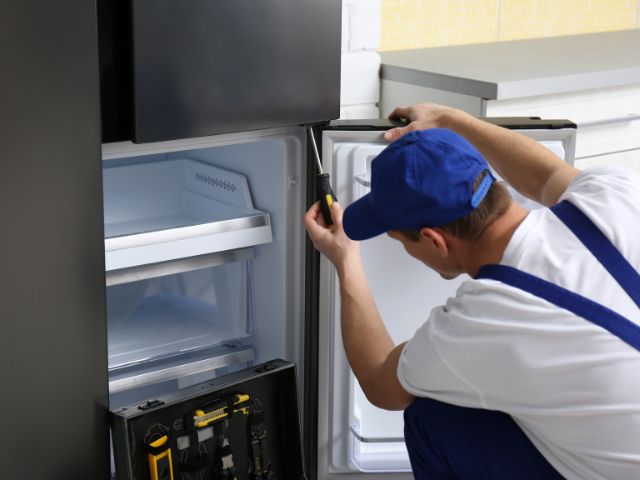Maintaining your Viking dishwasher is essential to ensure its longevity and optimal performance. Regular cleanings and simple maintenance hacks can help prevent issues and keep your dishwasher running smoothly. In this blog, we will discuss some quick and easy Viking dishwasher maintenance hacks that you can do yourself. These hacks will not only improve the efficiency of your dishwasher but also save you time and money on repairs. By following these maintenance hacks, you can prevent common issues like a dishwasher not starting or not draining water. So, let’s dive into the essential Viking dishwasher maintenance hacks and keep your dishwasher in top-notch condition.
Essential Viking Dishwasher Maintenance Hacks
To ensure the proper functioning of your Viking dishwasher, regular cleanings and maintenance are crucial. By following these essential maintenance hacks, you can keep your dishwasher in excellent condition.
1. Cleaning the Filter Regularly
Regularly cleaning the filter is essential to ensure the proper functioning of your Viking dishwasher. The filter helps to trap food particles and prevent them from clogging the drain pump or hose. Here’s how you can clean the filter:
- Take out the bottom rack of your dishwasher.
- Remove the coarse strainer by squeezing the tabs on either side and lifting upward.
- Rotate the fine filter counterclockwise and lift it up to remove.
- Rinse both the coarse and fine filters under running water.
- Use a plastic brush to gently scrub away any stubborn debris.
- Replace the fine filter by turning it clockwise to secure it.
- Position the coarse strainer back in place and push down to lock in the tabs.
- Finally, replace the bottom rack.
Regularly cleaning the filter will ensure that your dishwasher can effectively remove food particles and prevent clogs, leading to better cleaning performance and a longer lifespan for your Viking dishwasher.
2. Unclogging the Drain Hose
A clogged drain hose can cause water to back up and prevent your Viking dishwasher from draining properly. It’s important to unclog the drain hose to ensure the smooth flow of water. Here’s how you can do it:
- Unplug the dishwasher to ensure safety.
- Consult your Viking dishwasher manual to locate the drain hose. Most dishwashers have the drain hose behind a lower front panel.
- Disconnect the hose from the drain pump and inspect it for any visible obstructions or clogs.
- If you find any food particles or debris, carefully remove them using pliers or a straightened wire hanger.
- If the clog is not visible or reachable, you may need to disconnect the hose from the garbage disposal or air gap to check for blockages.
- If the clog is still not resolved, it’s recommended to seek the assistance of a professional service.
Regularly checking and unclogging the drain hose will ensure proper water flow and prevent any drainage issues in your Viking dishwasher.
3. Inspecting and Cleaning the Spray Arms
The spray arms in your Viking dishwasher play a crucial role in distributing water during the wash cycle. Over time, they can become clogged with food particles or mineral deposits, affecting their performance. Here’s how you can inspect and clean the spray arms:
- Remove the spray arms from your dishwasher. They are usually located at the bottom and top of the dishwasher.
- Rinse the spray arms under running water to remove any visible debris.
- Check the spray arm holes for any clogs and use a thin piece of wire to unclog them if necessary.
- Soak the spray arms in a mixture of white vinegar and water for a couple of hours to remove any mineral buildup.
- Rinse the spray arms thoroughly and reattach them to the dishwasher.
Regularly inspecting and cleaning the spray arms will that water is distributed evenly and effectively, resulting in better cleaning performance for your.
4. Using the Right Detergent
Using the right detergent is crucial for the proper functioning of your Viking dishwasher. Here are some tips for using the right detergent:
- Consult your Viking dishwasher manual for the recommended type and amount of detergent.
- Fill the detergent dispenser as per the manufacturer’s instructions. Make sure not to overfill it.
- Use the appropriate detergent for the wash cycle you are selecting. Different cycles may require different types of detergents.
- Avoid using hand or dish soap as they may create excessive suds and lead to poor cleaning performance.
- If you have hard water, consider using a detergent specifically designed for hard water to prevent mineral buildup on your dishes.
Using the right detergent will ensure that your Viking dishwasher can effectively clean your dishes and provide optimal performance.
5. Wiping Down the Gaskets and Seals
The gaskets and seals on your Viking dishwasher help to create a tight seal between the dishwasher door and the tub, preventing any leaks. However, over time, they can accumulate dirt and grime, affecting their effectiveness. Here’s how you can clean the gaskets and seals:
- Use a damp cloth or sponge to wipe down the gaskets and seals on the dishwasher door.
- Pay special attention to the areas where the gaskets and seals meet the tub.
- Make sure to remove any food particles or debris that may have accumulated.
- Avoid using abrasive cleaners or scrub brushes, as they can damage the gaskets and seals.
- Regularly wiping down the gaskets and seals will help maintain a proper seal and prevent any potential leaks in your Viking dishwasher.
6. Running a Vinegar Wash to Remove Buildup
Running a vinegar wash is an effective way to remove mineral buildup and odors from your Viking dishwasher. Here’s how you can do it:
- Empty your dishwasher completely.
- Place a cup of white vinegar on the top rack of your dishwasher.
- Run a hot water cycle without any dishes or detergent.
- The vinegar will help break down any mineral deposits and remove any unpleasant smells.
- Once the cycle is complete, open the dishwasher and let it air out for a while.
- Regularly running a vinegar wash will help keep your Viking dishwasher clean and fresh.
7. Checking and Replacing the Water Inlet Valve If Necessary
The water inlet valve is responsible for controlling the water flow into your Viking dishwasher. If it is defective or not functioning properly, it can affect the dishwasher’s performance. Here’s how you can check and replace the water inlet valve if necessary:
- Turn off the power to your dishwasher and shut off the water supply.
- Remove the access panel on the front of the dishwasher.
- Locate the water inlet valve and disconnect the wires and hoses connected to it.
- Use a multimeter to test the valve for continuity. If there is no continuity, the valve is defective and needs to be replaced.
- Install the new water inlet valve and reconnect the wires and hoses.
- Turn on the water supply and restore power to the dishwasher.
Regularly checking and replacing the water inlet valve if necessary will ensure proper water flow and prevent any issues with your Viking dishwasher.
8. Clearing the Garbage Disposal Connection
If you have a garbage disposal connected to your Viking dishwasher, it’s important to clear any obstructions in the connection to ensure proper drainage. Here’s how you can do it:
- Turn off the power to the dishwasher and the garbage disposal.
- Disconnect the drain hose from the garbage disposal or air gap.
- Check for any clogs or obstructions and remove them using pliers or a straightened wire hanger.
- Reconnect the drain hose securely and turn on the power.
Clearing the garbage disposal connection will ensure that water can flow freely from your Viking dishwasher, preventing any drainage issues.
9. Regularly Checking for Wear and Tear
Regularly checking for wear and tear is crucial to catch any potential issues with your Viking dishwasher early on. Here’s what you should look out for:
- Inspect the dishwasher door for any signs of damage or misalignment. Make sure the door latch is working properly.
- Check for any blown thermal fuses or timer issues. These can cause your dishwasher not to start.
- Look for any leaks around the dishwasher or water stains on the floor. These can indicate a problem with the water supply or drainage.
- If you notice any unusual noises or vibrations during the wash cycle, it may be a sign of a worn-out or faulty component.
- If you identify any significant wear and tear or encounter any issues, it’s best to seek the assistance of a professional dishwasher repair service.
Regularly checking for wear and tear will help you identify and address any potential issues with your Viking dishwasher before they become major problems.
10. Setting the Correct Dishwasher Settings for Your Load
Setting the correct dishwasher settings for your load is essential to ensure optimal cleaning performance. Here are some tips to help you:
- Separate heavily soiled items from lightly soiled ones. This will allow you to select the appropriate wash cycle and temperature.
- Place delicate items and glassware on the top rack to avoid damage from the spray arms.
- Load larger dishes and cookware on the bottom rack, making sure not to block the spray arms.
- Arrange cutlery and utensils properly in the silverware basket to ensure they are thoroughly cleaned.
- Avoid overcrowding the dishwasher, as it can prevent water and detergent from reaching every item.
By setting the correct dishwasher settings for your load, you can ensure that your Viking dishwasher provides excellent cleaning results.
Conclusion
Regular maintenance is crucial for the smooth functioning of your Viking dishwasher. By following these essential Viking dishwasher maintenance hacks, you can ensure its longevity and efficiency. From cleaning the filter to inspecting the spray arms and using the right detergent, each step plays a vital role in preserving your appliance. For more in-depth guidance on Viking dishwasher care, check our comprehensive maintenance guide: Efficient Spring Cleaning: Viking Dishwasher Maintenance Solutions. Keep your appliance running like new with these quick and easy maintenance tips.
Frequently Asked Questions
What Is the Best Way to Clean the Inside of a Viking Dishwasher?
To clean the inside of a Viking dishwasher effectively, start by wiping down gaskets and seals, then clean the filter and unclog the drain hose. Inspect and clean spray arms, use the right detergent, run a vinegar wash, and regularly check for wear and tear.
How Often Should I Clean My Viking Dishwasher’s Filter?
To maintain optimal performance, clean your Viking dishwasher’s filter every 1-2 months. Regular cleaning prevents clogs and ensures efficient operation. A clean filter helps in better dishwashing results and prolongs the life of your appliance.
Can I Use Regular Dish Soap in My Viking Dishwasher?
Using regular dish soap in your Viking dishwasher can lead to excessive sudsing and potential damage to the appliance. Stick to using detergent specifically made for dishwashers to ensure optimal performance and avoid any issues with residue or malfunctioning.
What Should I Do If My Dishwasher Smells Bad?
To tackle a smelly dishwasher, run a cycle with vinegar or baking soda, clean the filter and spray arms, check for food debris in crevices, and ensure proper ventilation. Avoid using bleach. Regular maintenance prevents odors.
How Can I Improve the Drying Performance of My Viking Dishwasher?
To improve the drying performance of your Viking dishwasher, ensure dishes are arranged properly for optimal air circulation. Use a rinse aid to aid in the drying process and consider increasing the heat setting if available. Regularly clean the dishwasher’s interior and check for any clogs in the drain system.







